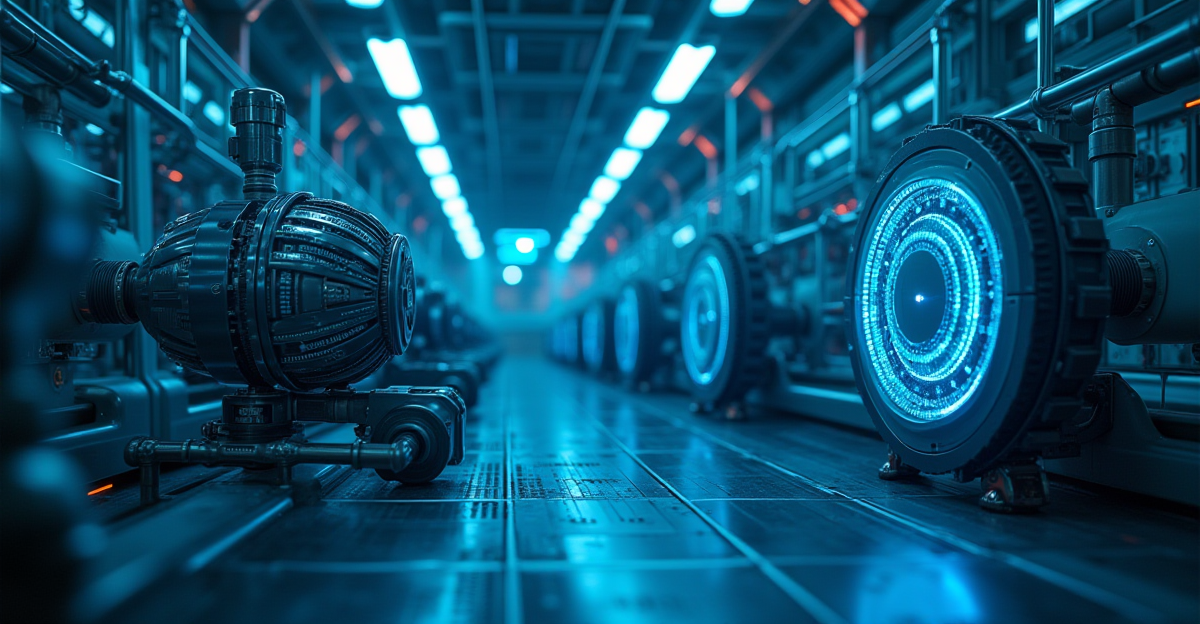What It Is
Automation and artificial intelligence are frequently discussed together but serve distinct purposes and operate through fundamentally different mechanisms.
Automation involves using software or machines to handle repetitive tasks based on predefined rules. It focuses on efficiency, speed, and manual input reduction. Classic implementations include robotic process automation (RPA), scheduled reporting systems, and simple workflow tools.
AI encompasses systems capable of learning, reasoning, and decision-making. Rather than following fixed instructions, AI adapts and solves complex, often unstructured problems. Applications include natural language processing, recommendation engines, and autonomous systems.
While both technologies are data-driven and depend on modern computing infrastructure, the core difference lies in autonomy and intelligence. Automation follows; AI thinks.
🎧 Automation vs AI roundtable
Transcript
HOST:Welcome to today's discussion on the intersection of technology and innovation. We're here to explore the differences between automation and artificial intelligence, as well as their commonalities. Joining me are Engineer, CEO, Researcher, and we'll be diving into the implications of these technologies for Ragonauts, explorers of AI and human knowledge. Let's start with the basics. Engineer, can you help us understand the distinction between automation and AI?
ENGINEER:Absolutely. Automation refers to the use of machines or software to perform repetitive tasks, often with a set of predefined rules. It's about efficiency and streamlining processes. On the other hand, artificial intelligence is about creating systems that can think, learn, and adapt like humans. AI is designed to make decisions, solve complex problems, and even create new ideas.
CEO:I'd like to add that automation is often used to optimize existing processes, whereas AI is used to transform them. With automation, we're looking at cost savings and increased productivity, but with AI, we're talking about creating new business models and revenue streams.
RESEARCHER:That's a great point. And from a research perspective, I'd say that automation is more about algorithms and programming, whereas AI is about developing intelligent systems that can learn from data and improve over time. The key difference lies in the level of complexity and autonomy.
HOST:That's fascinating. So, what are some commonalities between automation and AI? CEO, can you speak to that?
CEO:Well, both automation and AI rely on data and analytics to function effectively. They also both require significant investment in infrastructure and talent to implement successfully. And perhaps most importantly, they both have the potential to significantly impact the workforce and the way we live our lives.
ENGINEER:I'd add that both automation and AI are driven by advances in computing power, storage, and networking. The same technologies that enable automation also enable AI, so there's a lot of overlap in terms of the underlying infrastructure.
RESEARCHER:And from a research perspective, I think it's worth noting that both automation and AI are driving new areas of inquiry and innovation. For example, the development of autonomous vehicles relies on advances in both automation and AI.
HOST:That's really interesting. Now, let's talk about Ragonauts, explorers of AI and human knowledge. Researcher, can you tell us more about who they are and what they do?
RESEARCHER:Ragonauts are individuals who are pushing the boundaries of human knowledge by exploring the intersection of AI and human cognition. They're working to develop new technologies that combine the strengths of humans and machines, and they're driving innovation in areas like cognitive computing, natural language processing, and machine learning.
HOST:And what implications does the distinction between automation and generative AI have for Ragonauts?
RESEARCHER:I think it's crucial for Ragonauts to understand the difference between automation and AI, because it will inform their approach to problem-solving and innovation. If they're working on a project that involves automating a repetitive task, they'll need to focus on developing efficient algorithms and programming. But if they're working on a project that involves generative AI, they'll need to think about how to create systems that can learn, adapt, and evolve over time.
CEO:And from a business perspective, I think it's essential for Ragonauts to understand the potential impact of automation versus AI on their organizations. If they're investing in automation, they need to think about how it will affect their workforce and their operations. But if they're investing in AI, they need to think about how it will transform their business models and create new opportunities.
ENGINEER:I'd add that Ragonauts need to be aware of the potential risks and challenges associated with both automation and AI. For example, automation can lead to job displacement, while AI can raise concerns about bias and accountability.
HOST:Those are all great points. As we wrap up this discussion, what final thoughts do our panelists have on the distinction between automation and AI, and its implications for Ragonauts?
CEO:I think it's essential to recognize that automation and AI are not mutually exclusive, but rather complementary technologies that can drive significant innovation and growth.
RESEARCHER:I agree, and I think Ragonauts need to be aware of the potential synergies between automation and AI. By combining these technologies, they can create new solutions that are greater than the sum of their parts.
ENGINEER:And finally, I think it's crucial for Ragonauts to stay curious and keep learning. The landscape of automation and AI is constantly evolving, and they need to be able to adapt and innovate in response to new developments and challenges.
HOST:Thank you all for your insights today. It's clear that the distinction between automation and AI has significant implications for Ragonauts and the broader world of technology and innovation.
Expert Roundtable Technical Analysis
Key Strategic Insights:
Engineer: "Automation uses machines or software for repetitive tasks with predefined rules, focusing on efficiency and process streamlining. AI creates systems that think, learn, and adapt like humans, designed for decision-making, complex problem solving, and idea generation."
CEO: "Automation optimizes existing processes while AI transforms them. Automation delivers cost savings and productivity increases; AI creates new business models and revenue streams."
Researcher: "Automation centers on algorithms and programming; AI develops intelligent systems that learn from data and improve over time. The key difference lies in complexity level and autonomy."
Technology Commonalities
Shared Infrastructure Requirements:
- Both rely on data and analytics for effective functionality
- Require significant infrastructure and talent investment for successful implementation
- Potential for substantial workforce and lifestyle impact
Technical Foundations: Both technologies benefit from advances in computing power, storage, and networking, creating infrastructure overlap opportunities.
Innovation Drivers: Both automation and AI drive new research areas and innovation, exemplified by autonomous vehicle development requiring both technologies.
Strategic Implementation Considerations
Problem-Solving Approach: Understanding automation vs AI distinctions informs technical strategy. Repetitive task automation requires efficient algorithms and programming focus. Generative AI projects need systems designed for learning, adaptation, and evolution.
Business Impact Assessment: Automation investments affect workforce and operations; AI investments transform business models and create new opportunities.
Risk Management: Automation can lead to job displacement; AI raises concerns about bias, accountability, and transparency requiring careful governance.
Why It Matters for IT Strategy
For IT professionals navigating technology selection and workplace evolution, understanding automation vs AI differences is essential for strategic and implementation decisions.
Automation Applications
Process Optimization: Streamlines existing workflows, reduces time spent on repetitive tasks, enhances accuracy, and lowers operational costs. IT professionals understanding automation can optimize infrastructure operations and contribute to overall efficiency.
AI Applications
Process Transformation: Enables new working methods, products, and business models. IT professionals engaging with AI don't just optimize existing systems but drive innovation. AI assists in decision-making, generates creative solutions, and provides predictive insights, offering opportunities to move up the organizational value chain.
Risk and Change Management
Automation Considerations: Often requires less oversight and presents lower ethical concerns, though job displacement remains a consideration.
AI Governance: Introduces complex challenges related to bias, accountability, and transparency, demanding thoughtful governance frameworks and ethical awareness protocols.
Strategic Framework for Implementation
Technology Selection Criteria
Use Automation When:
- Tasks are repetitive and rule-based
- Processes are well-defined and stable
- Primary goal is efficiency and cost reduction
- Minimal adaptive capability is required
Use AI When:
- Problems are complex and unstructured
- Learning and adaptation are required
- Creative or predictive capabilities are needed
- Decision-making support is the primary objective
Implementation Approach
Complementary Integration: Automation and AI are not mutually exclusive but complementary technologies driving significant innovation and growth potential.
Synergy Opportunities: Combining these technologies creates solutions greater than the sum of their parts, offering enhanced organizational capability.
Continuous Learning: The automation and AI landscape evolves constantly, requiring continuous adaptation and innovation in response to new developments and challenges.
Key Technical Takeaways
Technology Distinction: Automation and AI represent different yet complementary technological approaches with distinct use cases and implementation requirements.
Strategic Application: Automation enhances efficiency through repetitive, rule-based task handling; AI introduces intelligence enabling learning, adaptation, and decision-making capabilities.
Professional Advantage: Understanding when to apply each technology helps IT professionals optimize infrastructure, drive innovation, and remain adaptable as digital transformation accelerates.
Risk Awareness: Knowledge of their differences is critical for managing implementation risks and ensuring ethical, responsible technology use in professional contexts.
Implementation Strategy
For IT professionals, success requires understanding both technologies' strengths and appropriate applications. This involves designing systems that leverage automation for routine tasks while implementing AI where adaptive intelligence adds value.
The goal is creating technology ecosystems that maximize efficiency through automation while enabling innovation through AI, ensuring organizations remain competitive and adaptable in rapidly evolving digital environments.
Advanced Exploration Tool
Use the provided LLM prompt for comprehensive automation vs AI analysis. Compatible with ChatGPT-4o and Llama3.3:70b through instruct interfaces. Customize role and language preferences for targeted exploration of technology selection and implementation strategies in your specific technical environment.
MY ROLE: [YourRole]
OUTPUT LANGUAGE: [LANGUAGE]
I want to deeply explore how automation and artificial intelligence (AI) differ, how they overlap, and how each applies to my role.
Please explain:
What automation and AI are, and how they differ in terms of capabilities, complexity, and autonomy
Why understanding these differences matters for my use case and responsibilities
How to identify which tasks and workflows are best suited for automation versus AI in practical scenarios
Typical misunderstandings or pitfalls when adopting automation or AI, and how to avoid them
How to optimize processes by applying automation and AI thoughtfully without adding unnecessary complexity or risks
Additionally:
Provide examples that make automation and AI intuitive and relatable for someone in my role
Suggest tools, frameworks, or methods to select, implement, and manage automation and AI effectively
Offer advanced tips for deeper exploration tailored to my field, including ethical considerations and future trends


